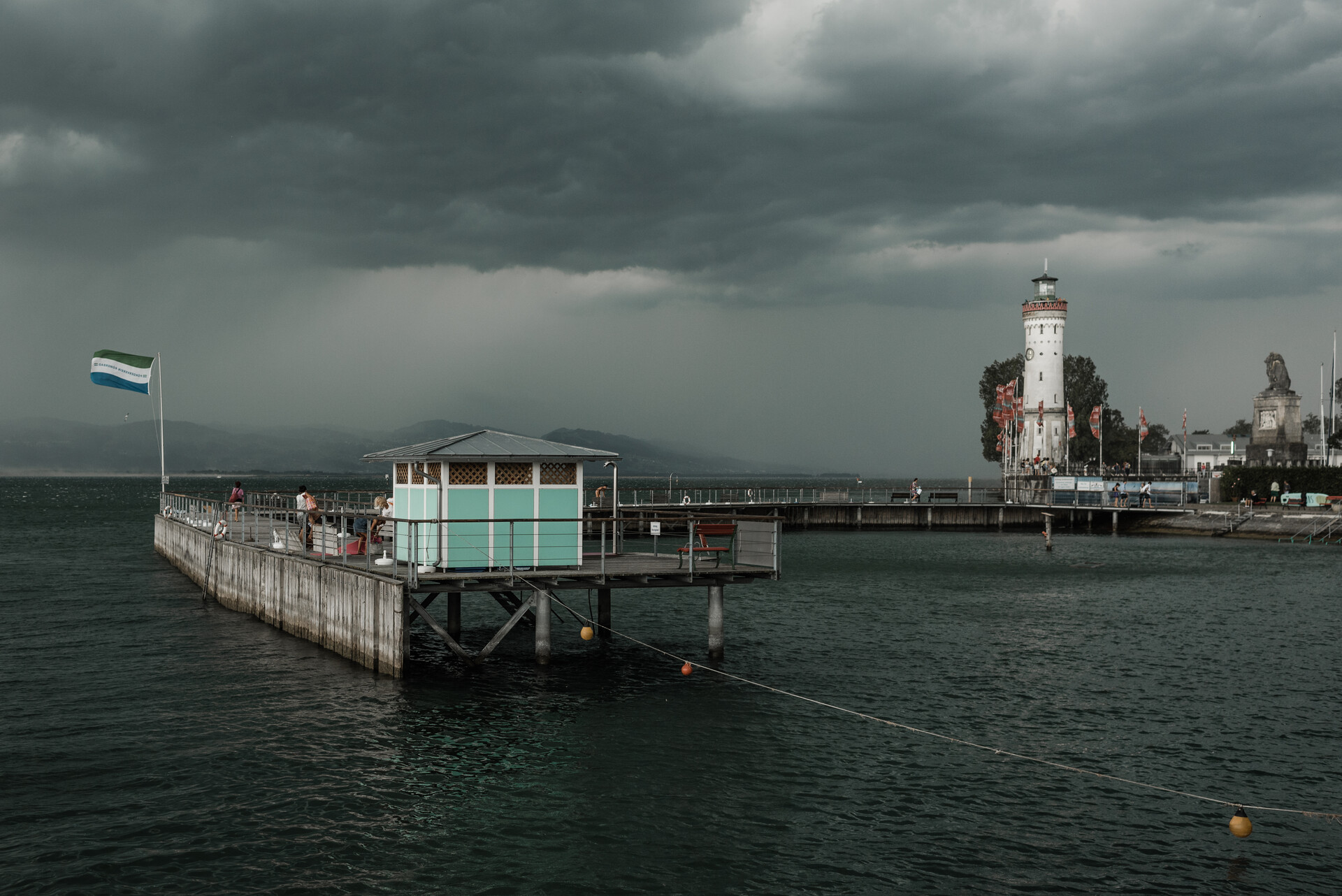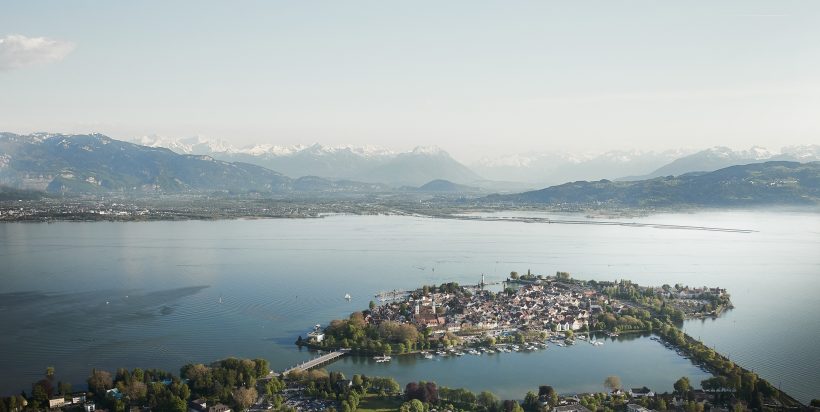
Sunny and warm, stormy and cool, or hazy and humid? Here you can find out reliably and up-to-date what the weather is like in Lindau. We also offer a preview for the next two days and general climate information – as well as a tip: even in “bad” weather, a visit to the island and garden city is worthwhile. With the right clothes, a walk along the lakeshore is fun at any time of the year – a stop in one of the numerous restaurants and cafés rounds off the exercise in the fresh air with pleasure.
The min/max temperatures shown below are current average values that are updated at regular intervals.
Pleasant climate all year round
In general, Lake Constance enjoys a pleasantly mild climate with an almost Mediterranean character. It is not for nothing that the region established itself early on as a popular destination for spa stays. Summers are warm, but thanks to the fresh sea breezes, not too hot. Winters remain comparatively mild – large masses of snow and very frosty days are rare. In autumn and spring, clouds of mist and fog often create a very special, mystical atmosphere. However, it can also be stormy from time to time.
Lake Constance weather in summer ...
If you travel to Lindau in Lake Constance from June to August, you can expect an average of seven hours of sunshine per day. In addition, there is usually a mild breeze, which makes the temperatures, which can sometimes climb above 30 degrees in summer, seem pleasant. The water temperature rises to over 20 degrees in July and August.
The number of rainy days is on average seven days higher than in the rest of the country – this is due to the proximity to the Alps. So it’s worth packing a light jacket and/or rain cape even in summer. The advantage of the mountain winds: Thanks to the air movements, “bad” weather can quickly turn into “good” weather again.
... and in winter
Lake Constance’s “heat reservoir” makes for relatively mild winters, which is not only appreciated by the fruit growers whose delicious fruit benefits from it. The wind, which provides pleasant cooling in summer, can sometimes make it “feel” really cold in winter. But it is not permanently icy at the lake. The last time it froze over was in 1963! But only a few kilometres away, on the peaks of the Alps, it is much colder and snowier. So it’s hardly more than a stone’s throw to boundless winter sports fun.
Föhn in spring and autumn
There are days on Lake Constance when the Alps seem close enough to touch: the breathtaking distant views are due to the Föhn weather. Such a weather situation occurs when a low-pressure area forms at the front of the Alps. The south-west current that results pushes the clouds towards the southern Alps, where they accumulate and finally rain down. Then the clouds on the northern side of the Alps sink and dissipate – a so-called Föhn window forms: the sun comes out and temperatures rise. Due to the warming, the air becomes very dry and thus contains little water vapour, which is why the view is very clear and the mountains seem very close.


